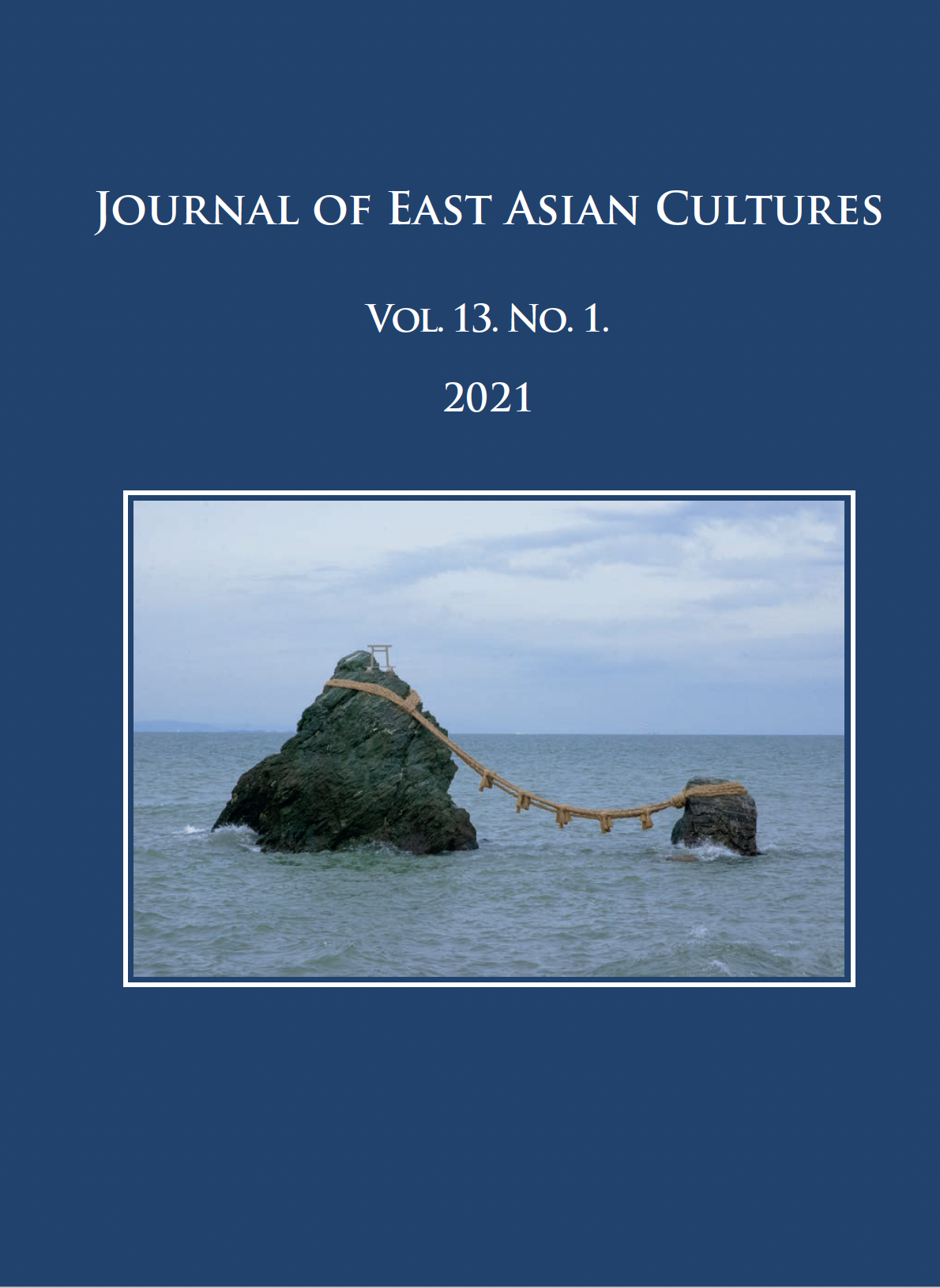Introduction to the Mongolian Kinship Terminology in Inner Mongolia On the Example of Qarčin-Tümed Dialect
Published 2021-12-15
Keywords
- Inner Mongolia,
- kinship terminology,
- loanwords,
- Mongolian dialects
How to Cite
Copyright (c) 2021 the author(s)

This work is licensed under a Creative Commons Attribution-NonCommercial 4.0 International License.
Abstract
Kinship terminology is a reflection of the kinship system in the language. Kinship is produced through marriage and family relationships. Terminology that refers to such kinship has gradually been refined over time. Due to historical developments and influences, Mongolian kinship terminology has increased and became more specific from the 13th century until today. Loanwords are an inevitable result of contacts with different languages and Mongolian kinship terminology has been influenced by this process as well. Mongolian dialects in Inner Mongolia were influenced by Chinese and are observable in kinship terminology. This does not apply to Mongolia and Russia (where the Kalmyks and Buryats live). This article will address three aspects. Firstly, the Mongolian kinship system will be briefly introduced. Secondly, the differences in kinship terminology between Middle Mongolian and contemporary Mongolian will be shown. Thirdly, kinship terminology of one of the Inner Mongolian dialects will be introduced.
References
- Aigle, Denise 2014. The Mongol Empire between Myth and Reality. Studies in Anthropological History. Boston: Brill Academic Publication. https://doi.org/10.1163/9789004280649
- Владимирцов Б.Я. 2002. Работы по истории и этнографии монгольских народов.
- [Works on History and Ethnography of the Mongols]. Москва: Восточная
- литература РАН.
- Činggeltei 清格尔泰 1991. Meng Gu Yu Yu Fa 蒙古语语法 [Mongolian Grammar]. Hohhot: Nei Meng Gu Ren Min Chu Ban She 内蒙古人民出版社.
- Dousset, Laurent 2011: “Understanding Human Relations (Kinship Systems).” In: N. Thieberger (ed.). The Oxford Handbook of Linguistic Fieldwork. Oxford: Oxford University Press, 209–234. https://doi.org/10.1093/oxfordhb/9780199571888.013.0010
- Fan lijun 范丽君 2004. Nei Meng Gu Fang Yan Qin Shu Cheng Wei Ci Wen Hua Te Zheng Yan Jiu 内蒙古方言亲属称谓词文化特征研究 [A Study of Features of Kinship Terminology in Mongolian Dialect in Inner Mongolia]. (MA dissertation, Inner Mongolia University).
- Fan lijun 范丽君 2005. “Meng Gu Yu Nei Meng Gu Fang Yan Qin Shu Cheng Wei Ci Zhong Han Yu Jie Ci Te Dian 蒙古语内蒙古方言亲属称谓词中汉语借词特点 [Characteristics of Chinese Loanwords in the Terminology of Kinship in Inner Mongolian Dialect].” Zhong Yang Min Zu Da Xue Xue Bao中央民族大学学报.6.32: 139–142.
- Farber, Bernard 1981. Concepts of Kinship. New York: Elsevier.
- Hidasi, Judit 2014. “Kinship Terminology from a Cultural Perspective: Japanese versus? Hungarian.” The Society for Gender Studies in Japanese 14: 43–48.
- ǰaran-nige 1981. “Mongγol kelen-ü töröl sadun-u daγudalγ-a. [Mongolian Kinship Terms].” Mongγol kele bičig 3: 2–8.
- Karder, Lawrence 1963. Social Organization of the Mongol-Turkic Pastoral Nomads [Indiana University Uralic and Altaic Series 20]. The Hague: Mouton.
- Namsirai 1987. “Mongγol kelen-ü töröl sadun-u daγudalγ-a-in tuqai ögülekü ni. [Research on Mongolian Kinship Terms].” Mongγol kele bičig 9: 24–34.
- Pavel, Rykin 2011. “The System of Kinship and Affinity Terms in Middle Mongolian”. Acta Orientalia Academiae Scientiarum Hungaricae 64.1: 25–47. https://doi.org/10.1556/AOrient.64.2011.1.3
- Poppe, Nicholas 1965. Introduction to Mongolian Comparative Studies. Wiesbaden: Otto Harrassowitz.
- Qasbaγatur 1994: “Mongγol kelen-ü ‘kürgen’, ‘beri’, ‘bergen’ gekü daγudalγ-a-in tuqai sudulaqu ni [Research on the Mongolian Kinship Terms of Son-in-law, Daughter-in-law, Sister-in-law].” Ӧbör mongγol-un yeke surγaγuli 1: 25–38.
- Qasbaγatur 1995: “Mongγol kelen-ü töröl sadun-u daγudalγ-a ‘eǰi’, ‘ekener’ ba ‘ökin’ ǰerge-in egusgel γarul-in sudulul [On the etymology of the terms mother, wife and daughter in Mongolian kinship].” Ӧbör mongγol-un yeke surγaγuli 3: 35–48.
- Qasungerel哈申格日乐 2011. Xian Dai Meng Gu Yu Chang Yong Qin Shu Cheng Wei Ci De Yu Yi Fen Xi 现代蒙古语常用亲属称谓词的语义分析 [A Semantic Analysis of Kinship Terminology in Contemporary Mongolian]. (PhD dissertation, Zhong Yang Min Zu Da Xue中央民族大学).
- Qin Xinlin 秦新林 1998.“Yuan dai meng gu zu de hun yin xi su ji qi bian hua元代蒙古族的婚姻习俗及其变化 [Changes of Mongolian Marriage Customs in Yuan Dynasty].” Yin Du Xue Kan 殷都学刊 1998.4: 33–36.
- Rachewiltz, Igor de 2015. The Secret History of the Mongols: A Mongolian Epic Chronicle of the Thirteenth Centruy. Canberra, AU: Brill
- Sárközi, Alice 2006. “Levirate among the Mongols.” In: Kinship in the Altaic World. [ Asiatishce Forschungen Bd. 150]. Wiesbaden: Harrassowitz, 259–267.
- Sečinbaγatur 2005. Mongγol kelen-ü nutuγ-un ayalγun-u sinǰilel-un uduritγal [Introduction to Mongolian Dialects]. Hohhot: Ӧbör mongγol-un arat-un keblel-ün qoriy-a.
- Sodubaγatur曹道巴特尔 1999. “Nei Meng Gu Fang Yan Tu Yu Hua Fen He Ka La Qin Tu Mo Te Yu Yan Jiu 蒙古语方言土语划分和喀喇沁土默特语研究 [The Division of Mongolian Dialect and the Study of Qarčin-Tümed].”Man Yu Yan Jiu满语研究 2: 98–107.
- Tana 1992. “Shi lun ‘meng gu mi shi’ zhongde gu dai meng gu zu hun yin xing tai 试论“蒙古秘史”中的古代蒙古族婚姻形态 [On the Ancient Mongolian Marriage Forms in The Secret History of Mongols].” Hei Long Jiang Min Zu Cong Kan黑龙江民族丛刊 3: 34–50.
- Temürbaγan 1984. “Mongγol kelen-ü töröl sadun-u daγudalγ-a-in tuqai ögülekü ni [Research on Mongolian Kinship Terms].” Mongγol kele bičig 3: 12–20.
- Тодаева В. Х. 1985. Язык Монголов Внутренней Монголии: Очерк Диалектов. [The Language of the Mongols of Inner Mongolia: Outline of Dialects]. Москва: Наука.
- Uyanga: Fieldwork in Udan tal-a γačaγ-a, Küriy-e qosiγu, Inner Mongolia,China. From June to July 2019.
- Wenying 2003: “Shi Lun Min Zu Qin Chu Cheng Wei Suo Fan Ying De Min Zu Wen Hua Xian Xiang论蒙古民族亲属称谓所反映的民族文化现象 [On the Ethnic Cultural Phenomenon Reflected in the Terms of Mongolian Kinship].” Xi Bei Min Zu Xue Yuan西北民族学院 1: 30–37.
- Yu Dajun 余大均 − Zhou Jianqi 周建奇 1997. Shi Ji 史集 [World History]. Beijing: Shang Wu Yin Shu Guan.
- Zhang Zhiming 张志明 2007. Meng Yuan She Hui Hun Yin Zhi Du Liu Bian Qian Xi蒙元社会婚姻制度流变浅析 [An Analysis of Mongolian Marriage System in Yuan Dynasty]. (MA dissertation, Xi Nan Zheng Fa Da Xue西南政法大学).

